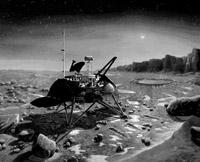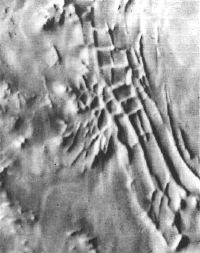Farewell to the century!
2000/12/01 Kortabarria Olabarria, Beñardo - Elhuyar Zientzia Iturria: Elhuyar aldizkaria
...and ten. The most relevant scientific milestones of the century have been reflected in these pages in ten articles that offer an article every decade, that is, three/four photographs, two pages, about 5 thousand characters and a title as attractive as possible. The short journey, which has had to reflect the entire century in a year, has been as interesting as looking at the past calmly. Because it could not be otherwise, in the last issue of Elhuyar Zientzia eta Teknika of the century, recalling the last decade of the century.
Internet, one of the main features of this decade. The network of networks has made the world small, has put all the necessary information, allows you to enjoy any service, even if it is the most remote... everything is related. But the Internet has also brought many things that must not be confused with progress: information junk, proliferation of pornographic networks, loss of intimacy… all in the name of democratization.
The Internet appeared in 1991, after creating software for the World Wide Web, although it did not begin to develop until 1993. That year appeared the Mosaic, the first graphical browser. By 1994, Netscape Navigator was already on the street. From there the network has grown and evolved into everything.
Internet would not be possible if there was no computer. The computer is not a tool created in the 1990s, but the increasing speed of computer microprocessors is one of the features of that decade without which the network would not be possible. In the field of computers, the appearance of the Pentium microprocessor in the 1990s must undoubtedly be considered a sign of progress. It was in 1990 that the first was created. From generation to generation it opened the door to generations of Pentium processors and has become the basis of most computers.
Although the Internet network that brings together the world - and at the same time separated - is not visible from space, to better observe the Earth and better investigate space, spectacular steps have been taken in the conquest of space in the last decade of the century. However, one of the most remarkable facts, which would change the way we work in space, occurred on Earth itself. In 1992 Russia and the United States signed an agreement to work together in the exploration of space, definitively burying the competitive environment of a time.
Before and after this signing act, the exploration of space gave much to say: Sending the Hubble to the space of the satellite telescope. He could get images without atmospheric interference on Earth (1990). The Discovery ferry tested the first GPS tool (1993). The Mars Observer probe was lost very close to Mars (1993). American spacecraft Atlantis and Mir Space Station joined together (1995). NASA found remnants of life in a meteorite on Mars (1996).
The Martian adventure focused the world on the red planet, mainly due to the studies carried out by Sojourner on the Martian soil (1997). The seven astronauts present on the Endeavour ferry repaired the Hubble (1998). Launch of the first section of the International Space Station. A project challenge in which different countries of the world participate and which, in theory, must be completed by 2004 (1998). The Mars Climate Orbiter and Mars Polar Lander probes were lost due to failures by NASA technicians (1999).
During this decade human beings have been altered by science, especially by genetic research that has been carried out. In this area, it may be necessary to mention the most famous animal of the decade: Dolly. Born in 1996, the first cloned sheep. Dolly clarified that research on the beings made a la carte was there and that genetics was not known. The ethical debate that arose after the birth of the sheep continues. Later much more progress has been made in the way of cloning.
In addition to cloning, among genetic research, the Human Genome project, which aims to complete the genetic map of the human being. The project was launched in 1993 and this year the project managers and representatives of Celera Genomics have announced its completion. The Genetically Modified Designation of Origin has acquired great importance in the 1990s.
The above facts have been perhaps the most important of the 1990s, but not the only ones. Others are: Induction cookers were invented (1990). In the Alps they discovered Otzi, an icy corpse of 5,000 years (1991). The English and French tunnel was opened. It has an approximate length of 50 kilometers and an average depth of 48 meters. The train from side to side requires more than half an hour (1994). Compact recordable discs were invented (1996). Mad cow disease stirred England and opened a debate on animal-borne diseases; in the background there was a debate on animal feed (1996). Viagra is launched, a medicine to combat male impotence. He succeeded from the beginning (1998). The first transplant was performed of a hand obtained from a corpse, but recently the transplant itself has requested the reamputation of the hand, since it is unsustainable to have to see the hand every day (1999). A person born from in vitro fertilization was his first mother. His mother, Natalie Brown, is the sister of Louise Brown, the first child born after in vitro fertilization (1999). The world population exceeds 6 billion people (1999).
And as for science - tastes and taste - it has gone as has been told in these pages. century. The following will also give much to say, and after seeing what science advances, you can't say that you won't know it.

Gai honi buruzko eduki gehiago
Elhuyarrek garatutako teknologia






